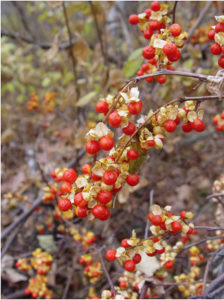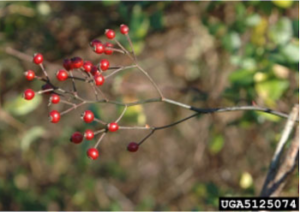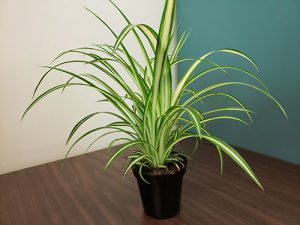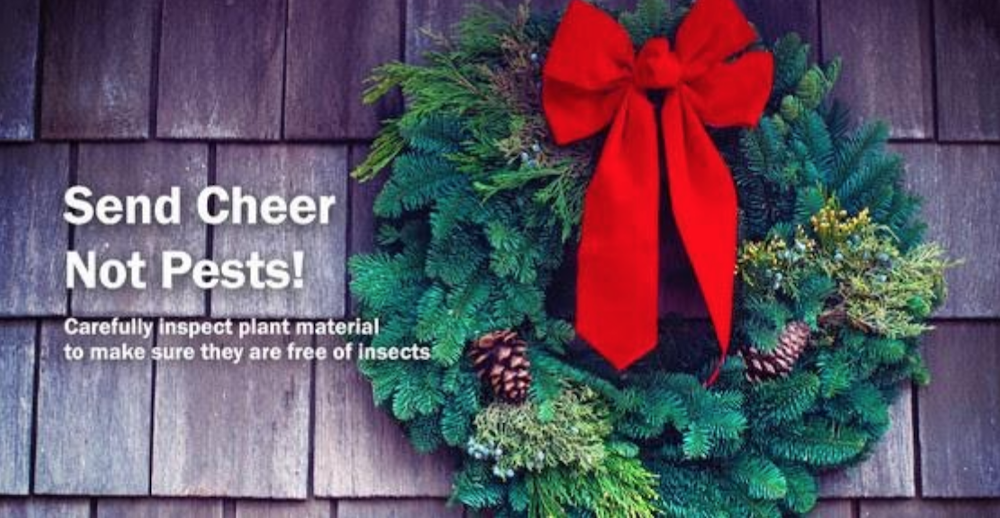
Maine Home Garden News — December 2021
In This Issue:
- Titles to Inspire Young Gardeners
- Wreaths and Garlands — Check Before You Buy
- Eastern Bluebird
- Tips for Growing Houseplants in Maine Series
- Send Holiday Cheer, Not Pests: Follow Out-Of-State Plant Health Regulations
- Practical Gifts for the Gardener on Your List
 Titles to Inspire Young Gardeners
Titles to Inspire Young Gardeners
By Kate Garland, Horticulturist; Michelle Wright, RSU 63 District Library Media Specialist; and Bangor Public Library Staff
For me, parenthood came with a flood of terrific gardening-themed books. I always enjoy swapping titles with fellow plant and book lovers. As we enter the gift-giving season, I reached out to a few experts to get their thoughts on this genre. I don’t even dare call these favorites because I’m certain I’ve forgotten a few that are truly tops in our household, and I’m guessing the contributors may feel the same. Without further ado, here are some options to consider sharing with the young ones in your life.
A Seed is Sleepy, by Dianna Aston
A gorgeous, informative, and beautifully written introduction to the fascinatingly diverse world of seeds.
A Place to Grow, by Kelly Murphy
Follow the journey a seed takes to find its forever home and learn how challenging it can be along the way. This story is also a great metaphor for older children getting ready to start their own journey away from home.
Chicks and Salsa, by Aaron Reynolds
Tired of their traditional meals, feisty farmyard animals steal from the garden and show off their culinary skills.
The Ugly Vegetable, by Grace Lin
After wishing for a more beautiful garden like their neighbors’, a girl learns to appreciate her mother’s traditional vegetables for the joy they bring at the dinner table.
Soup Day, by Melissa Iwai
A cozy story of cooking and togetherness.
Tops and Bottoms, by Janet Stevens
A trickful rabbit teaches a lazy bear, and the readers, lessons about how vegetables grow and the importance of hard work.
Farmer Will Allen and the Growing Table, by Jacqueline Briggs Martin
A true story about a former basketball player who turned an empty city lot into a garden to feed others.
Plant the Tiny Seed, by Christie Matheson
An interactive picture book with simple, sweet artwork.
How Did That Get In My Lunch Box? The Story of Food, by Chris Butterworth
Goes through how specific foods are grown and harvested—bread, cheese, tomatoes, apple juice, and chocolate chips for cookies—and also discusses the food groups.
Compost Stew: An A to Z Recipe for the Earth, by Mary McKenna Siddals
Vibrant artwork complements this lesson about the ingredients (from A to Z) for a healthy compost pile.
Before We Eat: From Farm to Table, by Pat Brisson,
Written as if saying a prayer of gratitude for all the steps a farmer goes through to get our food to us.
Eating the Alphabet Fruits and Vegetables from A to Z, by Lois Ehlert
A classic, colorful introduction to familiar, and maybe even some unfamiliar, fruits and vegetables.
My Garden, by Kevin Henkes
A child’s imagination is on full display in this excellent reminder of how magical a garden can be to our young helpers.
Up, Down, and Around, by Katherine Ayres
This fun-to-read story helps kids learn whether their favorite foods grow above or below ground…or around.
No, No Gnome!, by Ashlyn Anstee
A silly reminder of how to work together in the garden.
While nothing beats a real book in hand, many of these are available as read-aloud videos online—a great way to preview before you purchase.
If this list reminded you of a few treasured stories, consider sending me the title, author’s name, and a few words about your favorite garden-themed children’s book to share in a future issue of Maine Home Garden News. Happy reading!
Wreaths and Garlands — Check Before You Buy
By Maine Department of Agriculture, Conservation and Forestry
If you are planning to decorate with wreaths and garlands during the holiday season, please be sure that they do not include invasive plants that harm Maine’s natural areas and wildlife.
Invasive Plants to Look Out for and Report
- Asiatic Bittersweet
- Multiflora Rose
The two most common invasive plants used in wreaths and garlands are Asiatic bittersweet and multiflora rose. Both plants cause severe environmental damage by invading open fields, forests, wetlands, meadows, and backyards and crowding out native plants.
- Asiatic Bittersweet kills mature trees through strangling.
- Multiflora Rose can form impenetrable thickets that outcompete native plant species.
Both species are difficult to control and easily resprout after cutting. The placement of invasive plant wreaths and garlands outdoors or disposing of them in compost piles can lead to new infestations. Birds and other animals also eat the fruit and spread viable seeds into vulnerable forest areas.
Report It
Wreaths may not be sold that contain these or any of the 33 plant species banned for importation and sale in Maine. Report locations where banned plants are sold to the Maine Horticulture Program or by calling 207.287.3891.
Habitat Friendly Alternatives
“Look for decorations with native species in them like winterberry holly, red twig dogwood, or American mountain ash,” recommends Maine State Horticulturist Gary Fish.
Eastern Bluebird
By Doug Hitchcox, Maine Audubon Staff Naturalist
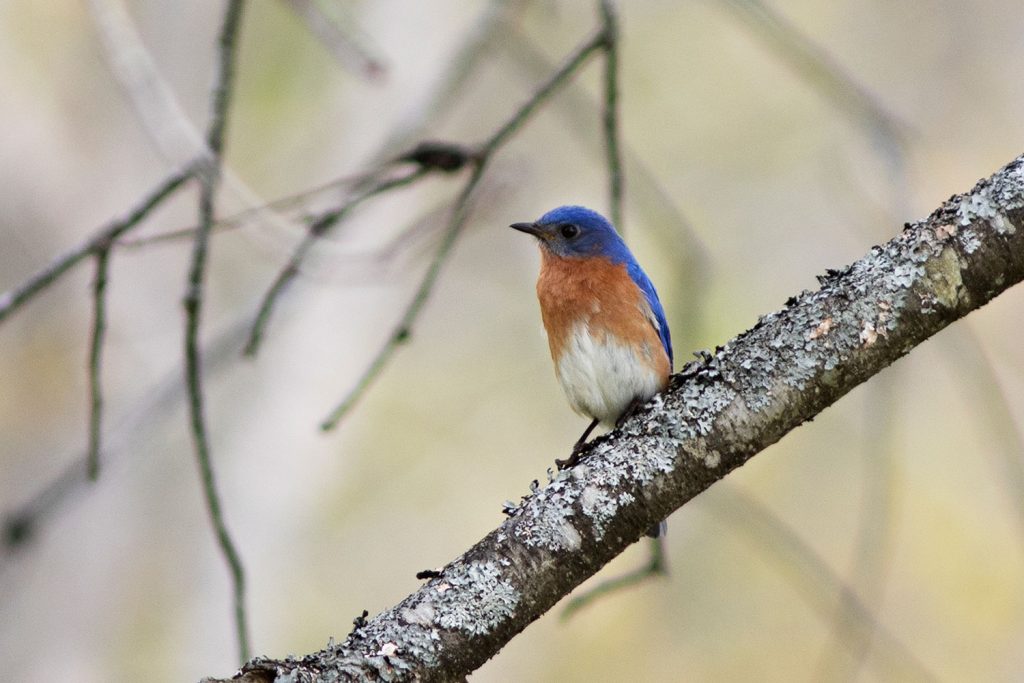 An increasingly common sight during Maine’s winter is the bright sky blue flash of an Eastern Bluebird lingering in our backyards. The trend has been well-documented thanks to long-running surveys like the Christmas Bird Count (CBC), showing that just a couple of decades ago bluebirds were scarce here in winter. In the ’90s and even the early 2000s, only 10 to 20 bluebirds were counted across Maine during the CBCs, but this has ramped up with more than 140 seen in 2012, 265 in 2013, and more than 336 in 2014. Numbers were steady in the mid 400s for a few years, then we cracked 600 in 2020! These counts have been increasing from the southern and coastal counts, and spreading northward; a pattern consistent with what we expect from climate change expanding a species’ range. While they are primarily eating insects in the summer, bluebirds are quite omnivorous in the winter and favor fruit-bearing shrubs like winterberry (Ilex verticillata) and can also be attracted to your yard by offering dried mealworms. Read more about Eastern Bluebirds in Maine’s Winter.
An increasingly common sight during Maine’s winter is the bright sky blue flash of an Eastern Bluebird lingering in our backyards. The trend has been well-documented thanks to long-running surveys like the Christmas Bird Count (CBC), showing that just a couple of decades ago bluebirds were scarce here in winter. In the ’90s and even the early 2000s, only 10 to 20 bluebirds were counted across Maine during the CBCs, but this has ramped up with more than 140 seen in 2012, 265 in 2013, and more than 336 in 2014. Numbers were steady in the mid 400s for a few years, then we cracked 600 in 2020! These counts have been increasing from the southern and coastal counts, and spreading northward; a pattern consistent with what we expect from climate change expanding a species’ range. While they are primarily eating insects in the summer, bluebirds are quite omnivorous in the winter and favor fruit-bearing shrubs like winterberry (Ilex verticillata) and can also be attracted to your yard by offering dried mealworms. Read more about Eastern Bluebirds in Maine’s Winter.
For more on the importance of Maine native plants to support birds and other wildlife, visit Maine Audubon’s “Bringing Nature Home” webpage.
Tips for Growing Houseplants in Maine Series
- Bulletin #2611, Caring for Houseplants in Maine
- Bulletin #2612, Dealing with Houseplant Problems
- Bulletin #2613 Controlling Insects and Disease in Houseplants
- Bulletin #2614 Growing Houseplants Under Artificial Lights in Maine
- Bulletin #2615 Creating New Plants from Old Plants
- Bulletin #2616 FAQs About Houseplants in Maine
This new series addresses the basics of keeping houseplants. It will help you diagnose common problems with your houseplants, such as insects and diseases; overwatering or underwatering; improper lighting, temperature, or humidity; and insufficient pot size (root-bound). The series addresses how to start new plants from old plants and also the unique challenges of growing houseplants in Maine, including the use of artificial light. Continue reading…..
Send Holiday Cheer, Not Pests: Follow Out-Of-State Plant Health Regulations
Maine Department of Agriculture, Conservation and Forestry
Save time and money by sending healthy plant material and knowing shipping and labeling requirements.
AUGUSTA—Many Maine residents’ holiday celebrations are not complete without decorating with Maine-grown wreaths, trees, and other decorative plant material. Sharing this tradition by sending wreaths and trees to our friends and families across the country can help us feel more connected even if we can’t be together this holiday season. The Maine Department of Agriculture, Conservation and Forestry (DACF) wants to remind Mainer’s sending holiday greenery that they can save time and money and prevent product loss by shipping only healthy plant material.
“Shippers should be aware of the many state laws and regulations regarding the movement of plants and forest products,” warned Carole Neil, Assistant Horticulturist with DACF. “Many states closely monitor shipments to prevent the introduction of invasive insects and plant diseases. By planning ahead, Maine shippers can speed up deliveries in this time-sensitive industry,” said Neil.
DACF offers this advice for wreath and tree shippers:
- Import regulations can vary from state to state; shippers should check destination state regulations before sending plant material. A summary is available on DACF’s website, Shipping Christmas Wreaths and Trees.
- Carefully inspect plant material before packaging to ensure they are free of insects such as scales, egg masses, or other pest damage.
- Clearly label packages containing holiday plant material, beginning with the statement “Grown in Maine,” followed by the county of origin and the name and address of the shipper.
- Labels should also indicate the contents of packages, including the different types of greenery, nuts, fruits, and cones used to decorate wreaths.
“Import requirements for cut trees and holiday decorations including greenery, ornamental nuts, and fruit exist to protect regional agriculture and natural resources from the risk of plant pests,” explained Sarah Scally, Assistant Horticulturist. “An insect or plant disease that occurs in Maine could potentially be invasive in other states. Unfortunately, despite the quality of Maine products, some shippers have learned about these regulations the hard way and have had shipments delayed, impounded, or destroyed. We want to prevent any losses by getting the word out now.”
Shippers with questions are invited to call 207.287.3891 or email horticulture@maine.gov. For more information visit the Maine Department of Agriculture, Conservation, and Forestry website.
Practical Gifts for the Gardener on Your List
By Kate Garland, Horticulturist, UMaine Cooperative Extension Penobscot County
Maybe you’re shopping for a gardening friend or your family is asking you what you wish for this year. This list is meant to give you ideas for very useful items any gardener would appreciate. Plus, this list puts you ahead of the pack when it comes to gathering supplies for the season ahead. Links have been added to items that might not be familiar to all. Any links to commercial websites are not intended to be an endorsement of a specific product or company.
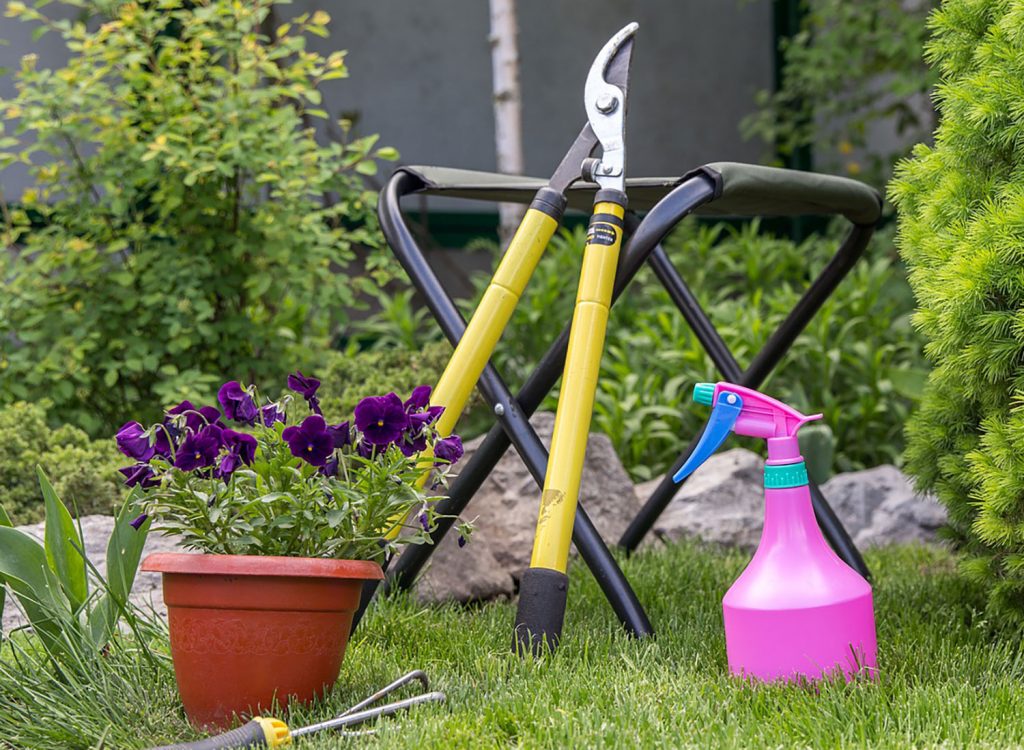
- Seeds
- Row cover
- Gloves
- Potting soil
- Pruners
- Loppers
- Pruning saw
- Soil blocker
- Cloth produce bags
- Harvest tub
- Heat mat
- Grow light
- Mason jars
- Handmade plant labels
- Tarp
- Hori Hori
- Coupons for your time helping in the garden
- Books, books, and more books!
While some of these suggestions may seem a little TOO practical, just imagine the laughs you could get when your loved one unwraps a big bag of potting mix.
Do you appreciate the work we are doing?
Consider making a contribution to the Maine Master Gardener Development Fund. Your dollars will support and expand Master Gardener Volunteer community outreach across Maine.
Your feedback is important to us!
We appreciate your feedback and ideas for future Maine Home Garden News topics. We look forward to sharing new information and inspiration in future issues.
Subscribe to Maine Home Garden News
Let us know if you would like to be notified when new issues are posted. To receive e-mail notifications, click on the Subscribe button below.
University of Maine Cooperative Extension’s Maine Home Garden News is designed to equip home gardeners with practical, timely information.
For more information or questions, contact Kate Garland at katherine.garland@maine.edu or 1.800.287.1485 (in Maine).
Visit our Archives to see past issues.
Maine Home Garden News was created in response to a continued increase in requests for information on gardening and includes timely and seasonal tips, as well as research-based articles on all aspects of gardening. Articles are written by UMaine Extension specialists, educators, and horticulture professionals, as well as Master Gardener Volunteers from around Maine, with Katherine Garland, UMaine Extension Horticulturalist in Penobscot County, serving as editor. Special thanks to our 2020 Master Gardener Volunteer co-editors Naomi Jacobs and Abby Zelz.
Information in this publication is provided purely for educational purposes. No responsibility is assumed for any problems associated with the use of products or services mentioned. No endorsement of products or companies is intended, nor is criticism of unnamed products or companies implied.
© 2021
Call 800.287.0274 (in Maine), or 207.581.3188, for information on publications and program offerings from University of Maine Cooperative Extension, or visit extension.umaine.edu.
The University of Maine is an EEO/AA employer, and does not discriminate on the grounds of race, color, religion, sex, sexual orientation, transgender status, gender expression, national origin, citizenship status, age, disability, genetic information or veteran’s status in employment, education, and all other programs and activities. The following person has been designated to handle inquiries regarding non-discrimination policies: Director of Equal Opportunity, 101 North Stevens Hall, University of Maine, Orono, ME 04469-5754, 207.581.1226, TTY 711 (Maine Relay System).

